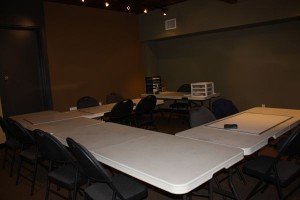Cardiac arrest statistics and CPR response

When it comes to CPR training, it is not usually a frontrunner in everybody’s list of responsibilities. When cardiac arrest happens, around 70 percent of Americans will not know how to react and respond to the situation. Some of these Americans have had previous CPR training but a certain amount of time has passed or they feel pressured by the situation and cannot act accordingly. This is a scary thought, because about 88 percent of cardiac arrest cases in the US actually happen at home.
It is important to remember that the skills you learn in CPR training could possibly save the life of a loved one or a dear friend, as well as a stranger who happens to collapse on the street.
Why study CPR?
Cardiac arrest is a condition that can happen to anyone. People who have pre-existing heart conditions are common victims of a heart attack, but there are cases where heart attacks happen without warning, to people with no known risk factors and appear healthy. It then becomes vital that a person is prepared for different kinds of scenarios when it comes to CPR.
How does a heart attack happen?
A heart attack in medical terms is called cardiac arrest. It can be caused by decreased blood flow to the heart. This happens when the vessels that supply the heart with blood become blocked with fatty deposits called plaque. Without oxygenated blood flow to the heart, the tissue starts to die and the heart stops beating.
Another cause of a sudden heart attack is a problem with electrical impulses that travel through the heart. If there is a severe electrolyte imbalance in the body (which can be due to poor intake, excessive vomiting and diarrhea, and losses due to diuretic medication), this can affect cardiac impulses. These impulses are responsible for making the heart beat, and if they are “fired” irregularly, it can cause the heart to beat erratically and stop.
What courses do I enroll in to get CPR training?
Our providers all over the US offer Basic Life Support and Advanced Life Support training. These two categories are similarly reflected in other providers in the country. Basic Life Support training has three main programs: Heartsaver CPR, Heartsaver CPR C, and Basic Life Support. The Heartsaver programs are for the public and healthcare providers respectively. However, all the other courses, Basic Life Support and the two Advanced Life Support courses, are only for HCPs.
The Basic Life Support curricula is a skill-oriented one, focused on chest compressions, rescue breaths, and defibrillation. The programs under this category are quite short and can be completed in a single session. Advanced Life Support courses are much more complicated, taken only by healthcare professionals. Both ALS courses are completed in a span of two days.
Enroll in a Basic Life Support course today.
